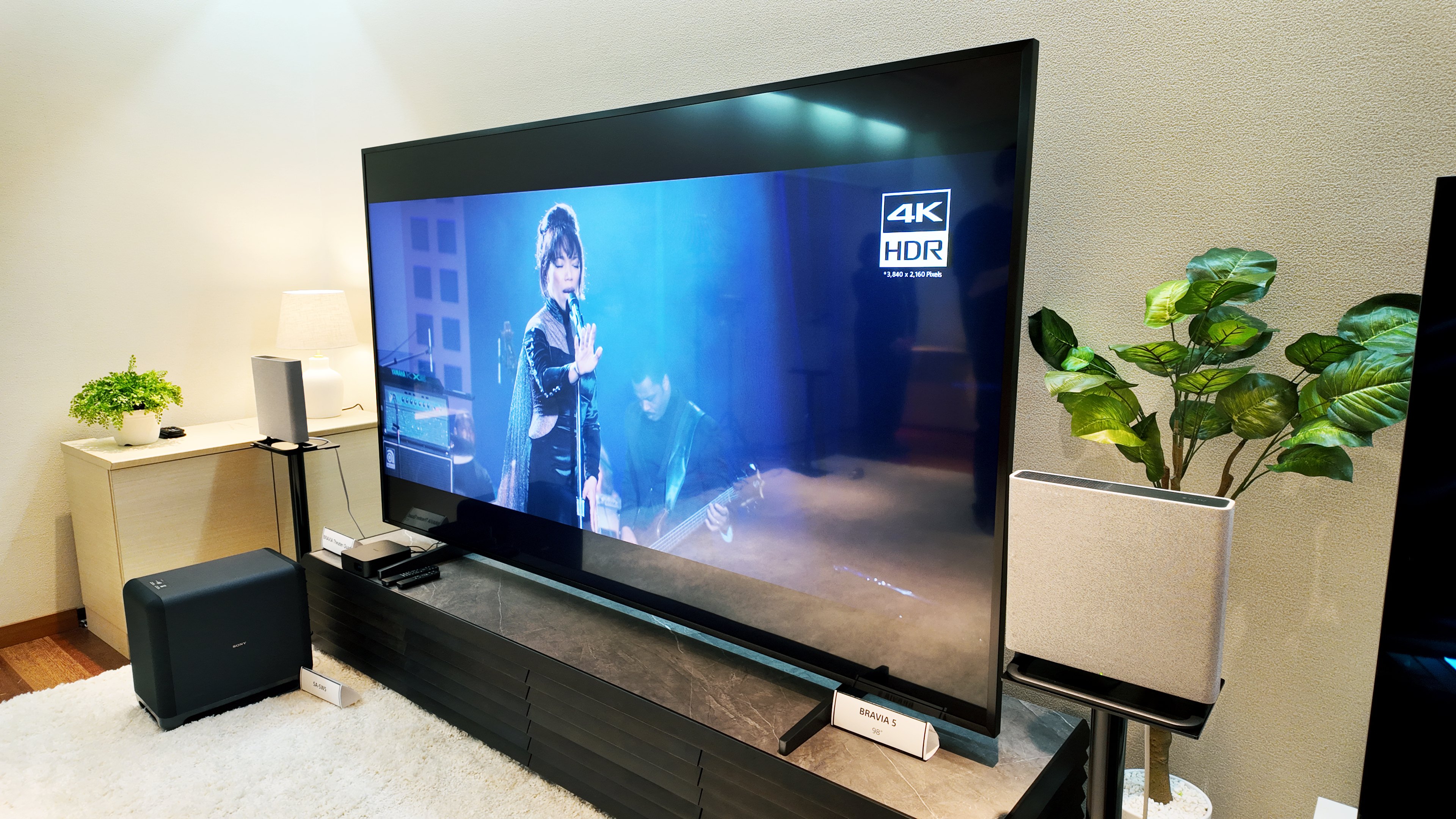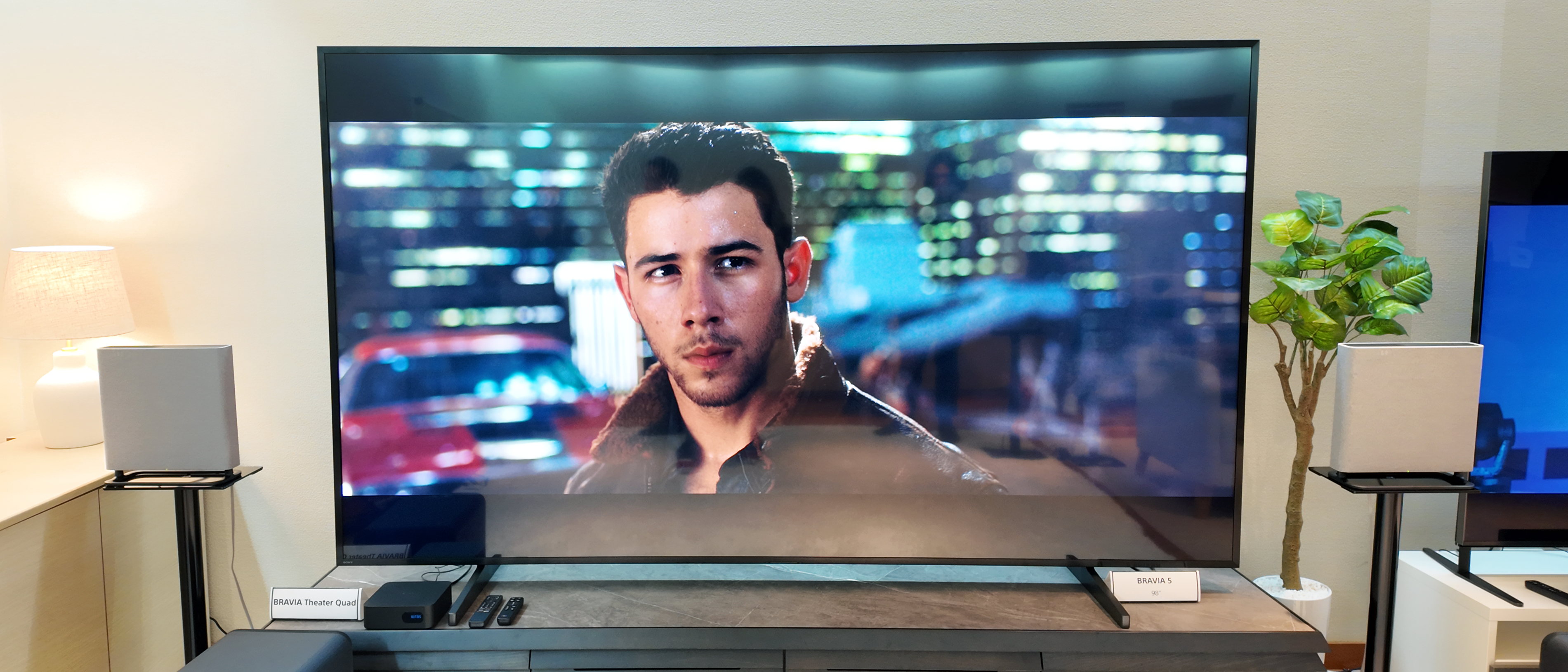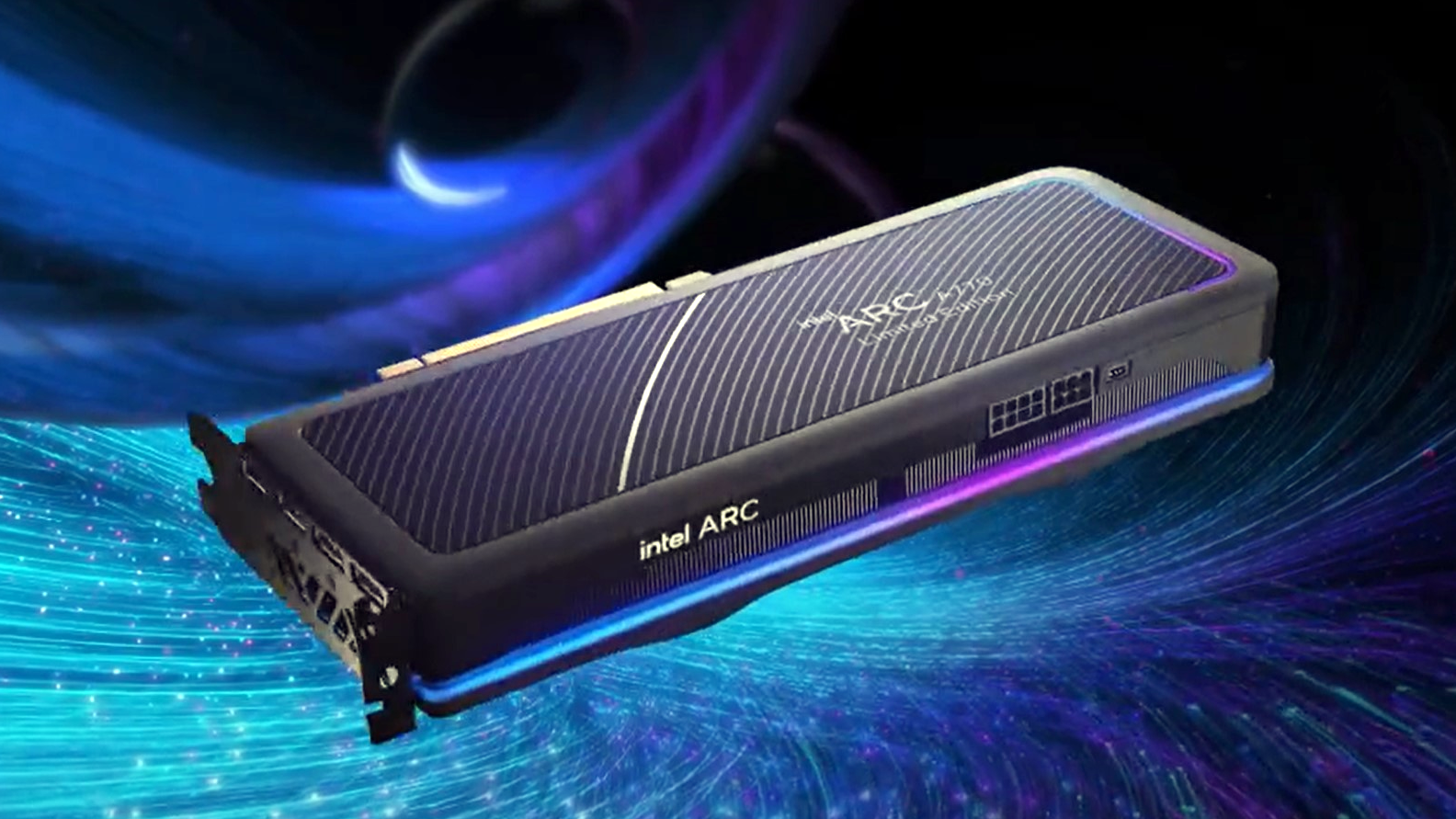Early Verdict
The Sony Bravia 5 joins Sony's Mini-LED TV family as a more competitively priced options with healthy size options, including a massive 98-inch screen. These are my first impressions having spent some hands-on time with the Bravia 5.
Pros
- +
Big size options
- +
More local dimming zones
- +
Ambient light sensor
Cons
- -
Off-angle viewing concerns
Why you can trust Tom's Guide
While the spotlight usually falls on Sony’s OLED TVs like the Bravia 8 II or even high-end Mini-LED TVs like the Bravia 9, there’s a new, competitively priced set for 2025 that I think will be an interesting one to watch.
The Sony Bravia 5 is a later addition to Sony’s Mini-LED TV offerings that promises premium-level features at a more accessible price point across a large array of sizes. Unlike the Bravia 8 II, which maxes out at 65 inches, the Bravia 5 scales all the way up to an impressive 98 inches. That’s the version I had the chance to see (slash, be towered over by) in person.
With significant improvements in backlight control and contrast, this model is shaping up to be one of the most exciting Mini-LED TVs of the year (and perhaps one of the best TVs overall).
While I’ll need to run benchmarks before making any conclusions, my outlook on the Bravia 5 is that it’s big and bright — two things that shoppers seem to care about more than ever.
Sony Bravia 5: Price & availability
Sony has not announced official pricing for the Bravia 5, but considering its positioning below the Bravia 7 and Bravia 9 Mini-LED TVs, I expect it to be a competitively priced option. It’s technically a follow-up to the Sony X90L, which was priced at $1,099 for the 65-inch version. These days, you can get the 75-inch version on sale for $1,199 at Amazon, which is $600 off.
Availability details are also pending, but Sony is expected to reveal more information soon. Once that happens, check back for updates on pricing and release dates.
Sony Bravia 5: picture quality
The Bravia 5 is powered by Sony’s XR Processor and XR Master Backlight Drive, claiming to bring better contrast, depth and detail compared to its predecessor, the Sony X90L. One of the most significant upgrades is the increase in dimming zones. The Bravia 5 has up to six times more than before, which should mean a massive leap in backlight control and minimizing blooming.
I saw this firsthand in a side-by-side comparison with older Sony Mini-LED TV models. Dark scenes had deeper blacks with far less of that milky gray haze, while bright areas maintained better precision and clarity. Sony’s commitment to preserving creator intent is evident, even in Dynamic mode, where colors typically get oversaturated. The Bravia 5 maintained a natural balance, particularly with greens, which often appear overly neon in vivid settings (though to be perfectly clear, I don’t recommend watching TV in the Vivid or Dynamic mode.)

Additionally, Sony has refined its Mini-LED backlight technology to better define lit objects on-screen, adjusting luminance in real time.
Essentially, the backlight drivers I reported on last year are trickling down the Sony TV lineup, and while the best technology is still reserved for the Bravia 9, the Bravia 5 benefits from the innovation.
Another feature is the new ambient light sensor that adjusts picture modes based on room brightness. This ensures that HDR content doesn’t appear too dim in bright environments, dynamically adapting to provide a more accurate picture regardless of lighting conditions.
But no TV is perfect, and the Bravia 5 does have one notable weakness: off-angle viewing. While the picture quality shows no obvious problems when viewed straight on, colors and contrast take a noticeable hit when watched from the side.
(That said, Sony is actively developing RGB Mini-LED technology, which drastically improves off-angle viewing to near-OLED levels. If you’re curious about how that works, check out my Sony RGB Mini-LED explainer.)
Sony Bravia 5 vs. Bravia 7

The Bravia 5 does boast major improvements, but it still sits below the Bravia 7 in Sony’s Mini LED lineup.
The Bravia 7 features Contrast Booster 20, offering superior backlight control and higher peak brightness compared to the Bravia 5’s Contrast Booster 10. Audio performance is also stepped up in the Bravia 7, with a stronger center channel for enhanced dialogue clarity.
One advantage the Bravia 5 has over the Bravia 7 is size. The Bravia 7 comes in 55, 65, 75 and 85-inch sizes, while the Bravia 5 offers those plus a 98-inch version.
Sony Bravia 5: Outlook
The Sony Bravia 5 pushes Mini LED technology further into a more accessible market, giving first impressions of great contrast, smarter backlight control and an immersive big-screen experience. Well, maybe that’s just the massive 98-inch version.
With no pricing details yet, the big question remains: how much will it cost? I’ll update as soon as Sony announces official pricing.
More From Tom's Guide
Kate Kozuch is the managing editor of social and video at Tom’s Guide. She writes about smartwatches, TVs, audio devices, and some cooking appliances, too. Kate appears on Fox News to talk tech trends and runs the Tom's Guide TikTok account, which you should be following if you don't already. When she’s not filming tech videos, you can find her taking up a new sport, mastering the NYT Crossword or channeling her inner celebrity chef.
You must confirm your public display name before commenting
Please logout and then login again, you will then be prompted to enter your display name.


